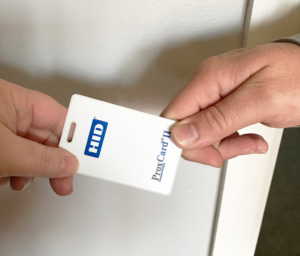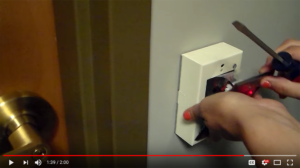7 Things That Should Scare You About Traditional Access Control
Paul Bodell, VIZpin CEO
 Happy Halloween! If you’re anything like me, this may be one of your favorite times of the year. The crisp cool weather, the changing fall leaves, football season, and one of the best holidays ever – Halloween! October 31st is all about scary costumes, spooky decorations, and friends and family members (or crazy neighbors) trying to scare the bejeezes out of you. While that’s all fun and games, it’s a definite reminder that there are some real scary things out there. Here are 7 things about traditional access control that should cause you to stop and think (kind of like when you’re watching the horror movie yelling “No, why are you going into the basement to check out the noise – just run!”).
Happy Halloween! If you’re anything like me, this may be one of your favorite times of the year. The crisp cool weather, the changing fall leaves, football season, and one of the best holidays ever – Halloween! October 31st is all about scary costumes, spooky decorations, and friends and family members (or crazy neighbors) trying to scare the bejeezes out of you. While that’s all fun and games, it’s a definite reminder that there are some real scary things out there. Here are 7 things about traditional access control that should cause you to stop and think (kind of like when you’re watching the horror movie yelling “No, why are you going into the basement to check out the noise – just run!”).
1. Sharing – I think it’s happened to all of us at one point or another. You arrive at your dorm, office, daycare or someplace similar, only to realize you don’t have your card or FOB needed to open the door. So, what happens next – you wait for the next person to come in then shrug your shoulders, apologize with what a crazy morning it’s been and ask if they can just let you in as well. And chances are, they do. Or you’re at your office and its lunchtime and you need to run out, so you ask your coworker to borrow their card since they have a 12:00 meeting and won’t be out anyway. And they do, most of the time without thinking twice. The problem is once this happens, you have no idea who is coming and going.

2. Network Connection – Traditional access control systems often use the same network as your critical business systems. If they can hack through your access control into your network you’ve got real problems. Read the NY Times article to check out how this recently happened to a 4-star Austrian hotel, locking out the 180 guests for ransom.
3. Installation Costs – You’ve chosen a system you like and are happy – until you get the quote for installation. Because traditional access control solutions are wired into a central panel and need a local network, this means expensive wiring, routers, an ISP and often IT consultants to make sure it is all right – your system installation costs can skyrocket quickly.
4. Vandalism – Traditional access control systems utilize card readers or keypads that require users to be in very close proximity or have contact with the reader. And that requires the reader to be mounted where someone can physically access it – outside the door or building. As a result – anyone can cause damage to it relatively easy, either by damaging the reader, cutting wires, removing the device all together. Check out how with a simple screwdriver you can unlock a door that’s protected by a keypad.
5. Time management – You’ll find that most of these access controls systems have limited administration options – often utilizing a local PC (again, because it has to be tied to the network). The admin can’t even start to designate access for a user until they actually create the user in the system. Then once created and assigned access, they need to program in card data. Then they’ve got to coordinate with the user to actually come get it from them. So much time wasted not only for the admin, but for the employees as well. And if urgent access is needed after normal business hours? Good luck.
6. Expansion – So, let’s say you’ve accepted the card sharing, network risks, installation costs and inefficiencies and put in a traditional card or FOB system anyway. You’ve got it on the front door, the back door,  the HR office and the IT room, but now you want to add access on the product stockroom/warehouse. Just add another reader, right? Unfortunately, with these systems it’s not that easy. You’ve got to retrofit wiring to the new location to get back to the central panel. And the control module only supports 4 readers, so now you have to purchase an additional module to take you to the next level. There go your costs again…
the HR office and the IT room, but now you want to add access on the product stockroom/warehouse. Just add another reader, right? Unfortunately, with these systems it’s not that easy. You’ve got to retrofit wiring to the new location to get back to the central panel. And the control module only supports 4 readers, so now you have to purchase an additional module to take you to the next level. There go your costs again…
7. Hidden Costs they don’t tell you about – Additional users means buying new cards or replacement cards. And keeping hardware up to date often involves buying new upgraded hardware or paying for expensive software updates, things they don’t always tell you up front. And the costs keep adding up!
Keep these in mind if you’re considering installing or updating an access control solution. And if you haven’t started thinking about smartphone access control – it’s time.

